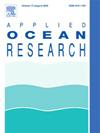Explainable AI for ship collision avoidance: Decoding decision-making processes and behavioral intentions
IF 4.3
2区 工程技术
Q1 ENGINEERING, OCEAN
引用次数: 0
Abstract
Most ship collision accidents are attributed to human errors. Autonomous navigation technology is heralded as a potential solution to mitigate human error-related collisions. Recent advancements have enabled the application of deep reinforcement learning (DRL) in developing autonomous navigation artificial intelligence (AI). However, the decision-making process of AI is not transparent, and its potential for misjudgment could lead to severe accidents. Consequently, the explainability of DRL-based AI emerges as a critical hurdle in deploying autonomous collision avoidance systems. This study developed an explainable AI for ship collision avoidance. Initially, a critic network composed of sub-task critic networks was proposed to individually evaluate each sub-task to clarify the AI decision-making processes in collision avoidance. Additionally, an attempt was made to discern behavioral intentions through a Q-value analysis and an Attention mechanism. The former focused on interpreting intentions by examining the increment of the Q-value resulting from AI actions, while the latter incorporated the significance of other ships in the decision-making process for collision avoidance into the learning objective. AI's behavioral intentions in collision avoidance were visualized by combining the perceived increment of Q-value with the degree of attention to other ships. The proposed method was evaluated through a numerical experiment. The developed AI was confirmed to be able to safely avoid collisions under various congestion levels, and the decision-making process and behavioral intention of AI for collision avoidance were rendered comprehensible to humans. It is comprehensible to seafarers onboard and could contribute to the future practical implementation of autonomous navigation AI systems.
船舶避碰的可解释人工智能:解码决策过程和行为意图
大多数船舶碰撞事故都是人为失误造成的。自主导航技术被认为是减少人为失误导致的碰撞的潜在解决方案。最近的进展使深度强化学习(DRL)在开发自主导航人工智能(AI)中的应用成为可能。然而,人工智能的决策过程并不透明,其误判的可能性可能导致严重的事故。因此,基于drl的人工智能的可解释性成为部署自动避碰系统的关键障碍。本研究开发了一种可解释的船舶避碰人工智能。首先,提出了由子任务评价网络组成的评价网络,对每个子任务进行单独评价,阐明了人工智能避碰决策过程。此外,我们还尝试通过q值分析和注意机制来辨别行为意图。前者侧重于通过检查人工智能行为导致的q值的增量来解释意图,而后者将其他船舶在避碰决策过程中的重要性纳入学习目标。将感知到的q值增量与对其他船舶的关注程度相结合,将AI在避碰中的行为意图可视化。通过数值实验对该方法进行了验证。验证了所开发的人工智能在各种拥堵程度下都能安全避让碰撞,并使人工智能避让碰撞的决策过程和行为意图为人类所理解。这对船上的海员来说是可以理解的,并可能有助于未来自主导航人工智能系统的实际实施。
本文章由计算机程序翻译,如有差异,请以英文原文为准。
求助全文
约1分钟内获得全文
求助全文
来源期刊

Applied Ocean Research
地学-工程:大洋
CiteScore
8.70
自引率
7.00%
发文量
316
审稿时长
59 days
期刊介绍:
The aim of Applied Ocean Research is to encourage the submission of papers that advance the state of knowledge in a range of topics relevant to ocean engineering.
 求助内容:
求助内容: 应助结果提醒方式:
应助结果提醒方式:


